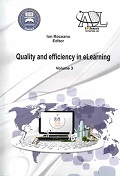THE NEW e-REGISTRATION AND ANALYSIS METHODS SUPPORT FOR OBJECTIFICATION OF THE TRAINING IN PERFORMANCE FOOTBALL GAME
THE NEW e-REGISTRATION AND ANALYSIS METHODS SUPPORT FOR OBJECTIFICATION OF THE TRAINING IN PERFORMANCE FOOTBALL GAME
Author(s): Ciprian Panait, Viorel CojocaruSubject(s): Education
Published by: Carol I National Defence University Publishing House
Keywords: MICOCH; football; training; performance; optimizing training; game; effort
Summary/Abstract: Performance in football supposes the development of all training components, taking into account the international technique, tactique and biological pattern (somatic, physiological, psychological, specific skills). Nowadays, the players participation, into the technical and tactical action during the game, asks for complex unfolding and execution forms, individually as well as collectively. We can say that the mentioned data like a football player runs during an official game about 10 km, the forwards run 8-9 km, the midfielders 9-10 km, the central defenders 7-8 km, the laterals back 8-9 km are in this moment exceeded. This statement would not have had a scientific basis without the new e-technologies, especially designed to objectively establish the efforts imposed by the official game to the players, depending on their position and to objectify the preparation in football. In this study we used MICOACH system. MICOACH registration and analyses system contributes to the training efficiency enhancement and determines the objectification of the entire preparing process which will be programmed and conceived depending on the real data, provided by the official game. Using the system provides us with real data concerning the type of the effort made and also a complex analysis of the players performance. All this information allows us to adapt the training for preparation process optimization and individualization. As we will notice in the analysis provided by MICOACH, the effort is structured depending on volume and intensity; it is statistically and mathematically analyzed. Thus, the analysis structures the volume and the different intensities on specific effort ranges, as well as their placement on time or distance unities.
Journal: Conference proceedings of »eLearning and Software for Education« (eLSE)
- Issue Year: 9/2013
- Issue No: 03
- Page Range: 49-54
- Page Count: 6
- Language: English

